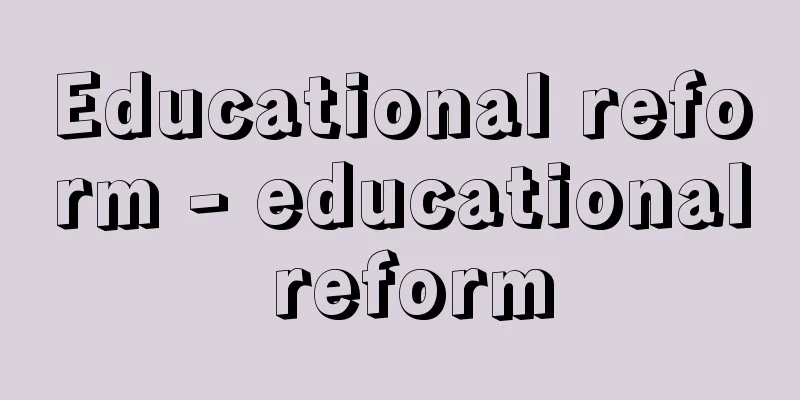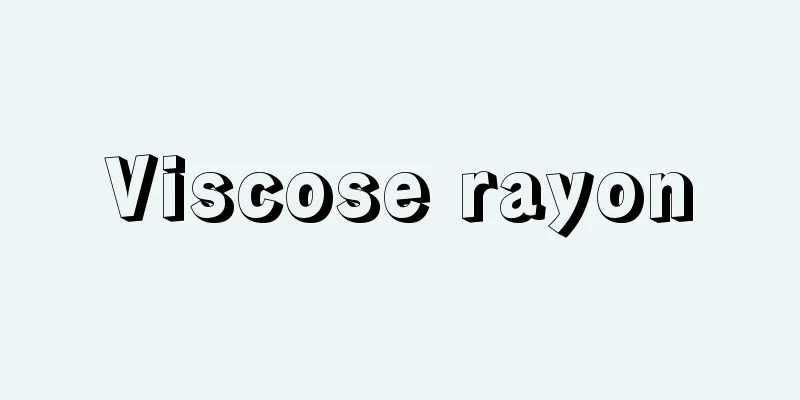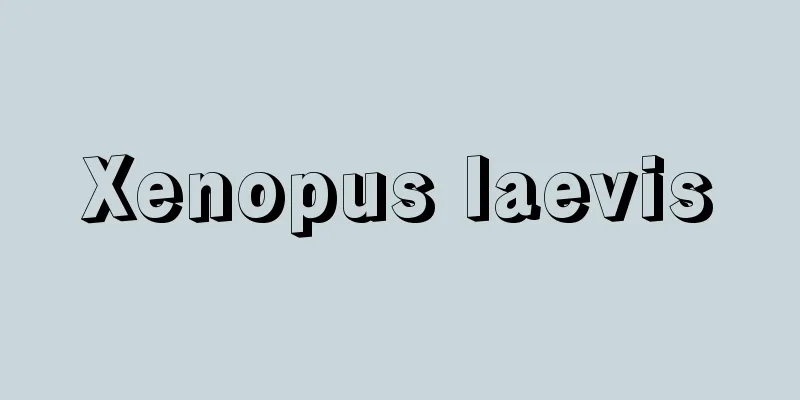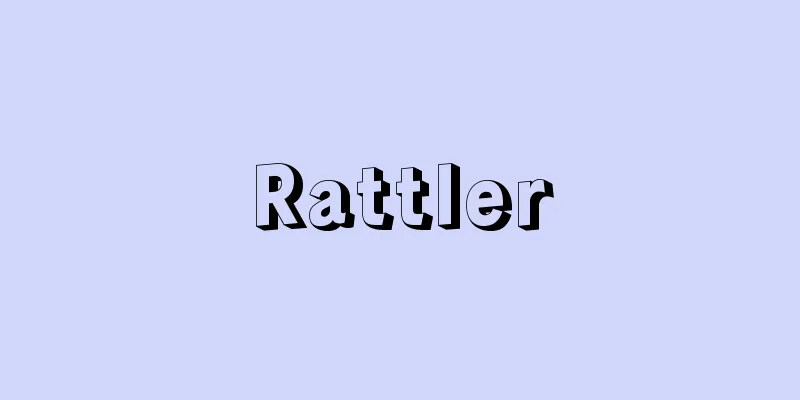Educational reform - educational reform

Changes in the nation and society and educational reformEducational reform is a reform that is undertaken in response to various national and societal needs and demands, focusing on the education system, particularly the school system, during the process of the establishment of modern nation states and thereafter, when the state became deeply involved in education. Below is a historical summary of educational reforms in Western countries. Educational reforms are carried out at the following times: (1) when primary education is made compulsory, (2) when secondary education becomes popular and the (lower) secondary education stage becomes compulsory, (3) when higher education becomes popular and lifelong learning takes place. Furthermore, (4) when a country goes from high economic growth to low economic growth, stagnation, or recession, and this continues for a certain period of time, the "small nation" becomes a model, and educational reforms are carried out to curb fiscal expenditures. (1) varies by country, but in Western countries, compulsory education and compulsory school attendance were institutionalized in the late 19th century (First Education Reform). (2) was in the mid-20th century, and especially in the 1960s, which was called the "age of education explosion" in Western countries (Second Education Reform). (3) was roughly from the 1970s onwards, when the idea of universal higher education (a stage where more than 50% of people of the same age advance to higher education) proposed by higher education researcher Martin Trow (1927-2007) and the idea of lifelong education and lifelong learning were implemented in the education policies of each country (Third Education Reform). (4) is represented by the idea of New Public Management (NPM), mainly in the UK and the US, which came into being in the 1980s after the oil crisis, and aimed for a "small government" with low expenditures commensurate with low revenues, with the aim of downsizing the public sector and revitalizing it through market principles (Fourth Education Reform). A recent trend in education reform is that reforms are taking place at the same time. International organizations such as the OECD (Organization for Economic Cooperation and Development) have been sharing information, and education reforms that refer to the results of other countries are progressing almost simultaneously. A typical example of this is the education reforms that were triggered by the OECD's Pisa study (a learning achievement survey of 15-year-old students at the end of compulsory education). In some countries, such educational reforms are carried out in several stages simultaneously. [Shinji Sakano] First Education ReformThe first educational reform, the introduction of a compulsory education system, was brought about by the establishment of modern nation states through the civil revolution in Western countries, and changes in the economy and production system due to the Industrial Revolution. In Germany, compulsory education systems developed in each state and region. Compulsory education laws were issued as early as the 17th century, but the compulsory education system in the modern sense was established in Prussia through the General Act of 1794 and the Constitution of 1848. In the UK, the protection of child labor through Factory Acts and the provision of education through charity were combined to establish a compulsory education system through the Elementary Education Act of 1870. In the US, education laws for each local government can be found from the 17th century onwards, but it was not until the second half of the 19th century that the system developed into a compulsory education system. When was the first educational reform in Japan, the introduction of the compulsory education system, carried out? Before the Meiji Restoration (1868), there was a voluntary school system, such as clan schools and temple schools. After the Meiji government established the education system in 1872 (Meiji 5), a modern education system was created through the Education Order of 1879 and its amendments, and the School Order of 1886 and its amendments. The Meiji government promulgated the Constitution of the Empire of Japan in 1889 to organize the national system, and clarified the purpose and goals of education in the Imperial Rescript on Education of 1890. In response to the increase in the elementary school enrollment rate in the 1890s, the elementary school period was extended from four to six years in 1907, making the period of compulsory education six years. The content of education was organized in the Elementary School Curriculum Guidelines enacted in 1881, and textbooks were nationally designated in 1903. [Shinji Sakano] The second education reformThe second educational reform, making lower secondary education compulsory, occurred when it was recognized that school education plays an important role in the distribution of human resources in society, and more people rushed to secondary education. At first, the length of compulsory education was extended by extending the period of primary education. However, when it became clear that going on to higher education, mainly university, would bring economically advantageous status, the expansion of university preparatory institutions was intended. In the United States, from the end of the 19th century to the first half of the 20th century, the expansion of public high schools was accompanied by a diversification of educational content (subjects and courses for higher education and subjects and courses for vocational studies). In response to this, some states changed the eight-year elementary school system to a 6-3-3 system. In the United Kingdom, the 1944 Education Act (Butler Act) extended the compulsory education period, elevated the upper elementary school level to a secondary education institution and became a modern school, and various secondary education schools such as technical schools, grammar schools, and public schools coexisted. In the 1960s, the number of people hoping to go to grammar schools and other schools increased, ushering in the "age of education explosion." In response to this, when the Labour Party came to power in the 1960s and 1970s, the introduction of comprehensive schools was advocated and became widespread. In France, in order to cope with the increase in students wishing to continue to higher education around the 1960s, a common observation stage for the sixth and seventh grades was introduced (1959), and the Abie reform of 1975 abolished the school system divided according to the path of secondary education and attempted to switch to a common school system for all. Meanwhile, Germany also experienced an "education explosion" around the 1960s, and although various educational reform plans were announced, the extent of this was an extension of the years of compulsory education, and the school system divided according to the path of education, such as gymnasiums, technical schools, and Hauptschule, was basically maintained. In terms of reform of educational content, the Soviet Union succeeded in launching the artificial satellite Sputnik in 1957, giving it an advantage over the United States and other Western countries in the race for science and technology (the Sputnik Shock). In response, Western countries promoted the "modernization of educational content" centered on the field of science and technology from the 1960s onwards, and promoted reform of educational methods in line with the development of educational technology. The second educational reform in Japan was brought about by Japan's defeat in the Second World War. Under the influence of the occupying forces, mainly the United States, the Constitution of Japan was established in 1946, followed by the Fundamental Law of Education (old law) and the School Education Law the following year in 1947. The postwar educational reforms aimed to transform the school system from the prewar branched system of old junior high schools, old girls' high schools, vocational schools, and upper elementary schools to a single-track system of 6-3-3-4 years of elementary, junior high, high school, and university, and extended compulsory education from 6 to 9 years. As a result, the rush of students to go to university did not occur at public junior high schools based on school districts, but appeared at high schools at the upper secondary education stage, especially at high schools for university preparation that were based on old junior high schools and old girls' high schools. Some prefectures took measures to prevent a rush of applicants to specific high schools by adopting a comprehensive selection system. However, in the 1960s, when the generation born between 1947 and 1949, known as the "postwar baby boomers" (later known as the "dankai generation"), began to enter high school, it caused an excessive competition in the high school entrance exams, with the rule that "four hours of sleep means you pass, five hours means you fail." Furthermore, the curriculum guidelines announced in 1958 created a division in junior high school between those who went on to higher education and those who went on to find employment, leaving many issues unsolved at the popularized secondary education stage. [Shinji Sakano] The third education reformThe third educational reform began around the 1970s. In addition to the popularization of higher education, the idea of lifelong education and learning became widespread. This led to changes in the nature of higher education institutions, and also in education at primary and secondary education institutions, where emphasis was placed on the quality of knowledge (how to learn), rather than the quantity of knowledge. Student protests in the late 1960s in various countries brought about changes in the nature of higher education in the age of massification. On the one hand, lower-standard higher education institutions were established to provide more people with opportunities to study at higher education institutions. Community colleges in the United States, City Technology Colleges (CTCs) in England, Fachhochschule (Fachhochschule) in Germany, and HBOs in the Netherlands were all established as higher education institutions with short employment periods. New higher education institutions bring new fields that are not part of traditional academic fields but are closely related to careers to higher education institutions. The expansion of career-related science fields in higher education institutions means that graduates will be transformed into a different social status from their traditional ones. In 1976 (translated in Japanese in 1978), Doerr published "Academic Certification Society: A New Civilization Disease," which clearly shows the massification of universities in society. As the school system becomes a strong institution for allocating occupations and social and economic status in society, equality of educational opportunities, both formally and substantively, becomes an important policy issue. School busing in the United States, which forces white and black students to study together, and comprehensive schools in the UK and Germany are examples of institutionally guaranteeing and forcing everyone to learn in common. Furthermore, Pierre Bourdieu (1930-2002) and linguist Basil Bernstein (1924-2000) clarified how differences in culture and language due to class differences affect success or failure at school. This made clear how difficult it is to guarantee equal educational opportunities in practice. As a result, some people began to advocate withdrawal from the school system, as in Illich's "Deschooling Society." This was an era in which the issue of realizing social justice through the school system was given importance. The definition of Japan's third educational reform differs depending on the commentator, but they all agree that it is an educational reform that took place after the Central Council for Education's report of 1971 (Showa 46), known as the "46 Report." In 1970, the high school enrollment rate exceeded 80%, and by 1974 it was over 90%, with most people moving on to higher education institutions. The "46th Report" of the Central Council for Education (Central Council for Education) attracted attention as a proposal for the overall state of the education system in an era of the popularization of higher education. Based on the idea of the school system as a means of allocating human resources suited to the industrial structure of an industrialized society, as outlined in the 1966 (Showa 41) Central Council for Education report "The Expected Image of a Human Being," the "46th Report" was notable for being based on a variety of data and materials. However, the oil shock of 1973 caused the economic growth forecasts of the 46th Report to turn out to be completely different. This showed how difficult it is to predict the future, and had a negative impact on the subsequent formulation of education policy based on data. [Shinji Sakano] The fourth education reformThe oil shock of 1973 caused Western countries to enter a long-term economic recession. From the second half of the 1970s onwards, each country faced a revenue shortfall. The national model up until then was the welfare state. As each country's economy grew, its revenues increased, and income was redistributed through the state to areas such as health care, welfare, and education. Large amounts of the budget were allocated to these areas, but because overall revenues were increasing, no major difficulties arose. However, if the economy stagnates or experiences a recession for a certain period of time, there will be a need to review and reduce expenditures. It was in this era that the idea of NPM emerged. While the welfare state is premised on a "big state," NPM is a theory that aims for a "small state." In this theory, the state's role in setting market rules is minimized as much as possible, while the vitality of the private sector is emphasized to revitalize the economy through competition based on market principles. At that time, it was British Prime Minister Thatcher and US President Reagan who advocated this NPM approach and were among the first to introduce it into the field of education. Thatcher wanted to create a competitive environment between schools and efficiently improve the quality of school education. In 1988, the Education Act introduced a school choice system, and to enable fair competition for schools, national standards for education were created and common tests based on those standards were administered to specific grades. In 1992, the Education Standards Agency was established and external evaluation of schools was introduced. In the United States, during the Reagan administration, a committee appointed by the Secretary of Education compiled a report called "A Nation at Crisis" in 1983, proposing improvements to school education. In the 1990s, national (state) educational goals were set, specific standards for achievement were created, and standards to be achieved were presented. Then, in 2002, the No Child Left Behind Act (NCLB) was enacted, requiring all children to achieve certain standards in state tests. The starting point of Japan's fourth education reform was the Nakasone Yasuhiro Cabinet (1982-1987). This was an attempt to introduce NPM-type methods to Japan, and paved the way for the privatization of Japan National Railways (now JR) and Japan Tobacco and Salt Public Corporation (now JT). In the field of education, Prime Minister Nakasone established the Provisional Council for Education (Rinkyo-in) as an official advisory body to the Prime Minister (1984-1987). However, with the rapid economic recovery in the second half of the 1980s, it was during the Hashimoto Ryutaro Cabinet (1996-1998) and the Koizumi Junichiro Cabinet (2001-2006) that NPM-type methods began to permeate the education world. On September 21, 1998, the Central Council for Education submitted a report entitled "The Future of Local Education Administration." In response to the trend towards administrative reform and decentralization, the report proposed a review of the division of roles between the national government, prefectures, and municipalities, as well as the Board of Education system, and various measures to ensure school autonomy and independence (such as the introduction of a school council system). In 1999, the Omnibus Law on Decentralization was enacted. Furthermore, in 2001, along with the transfer of authority from the national government to local governments, the central government was reorganized from one agency and 22 ministries to one agency and 12 ministries. The Ministry of Education was also merged with the Science and Technology Agency to become the Ministry of Education, Culture, Sports, Science and Technology. The Koizumi administration implemented administrative and financial reforms that transferred national financial resources to local governments and also promoted the transfer of authority. The national government's subsidy rate for prefectural expenditure on teacher salaries, etc., under the National Treasury Subsidy Law for Compulsory Education Expenses, was also reduced from half to one-third (implemented from the 2006 academic year). The Abe Shinzo administration (2006-2007), which followed the Koizumi administration, completely revised the Fundamental Law of Education, which had been enacted in 1947 (Showa 22), (2006), and revised the School Education Law and other three educational laws (2007). [Shinji Sakano] Improving and reforming primary and secondary education in JapanRegarding the curriculum, the Course of Study was revised in 1998 and 1999, and a new concept of academic ability called "life skills" was put forward. The content of each subject was reduced by 30%, and "integrated study time" was introduced, where the content is determined by the school. However, due to concerns about a decline in academic ability, the Course of Study was partially revised in 2003, and completely revised in 2008 and 2009. With these revisions, the content that had been cut in the previous revisions was reintroduced, and emphasis was placed on basic and fundamental knowledge and skills. As authority was transferred from the national government to local governments, emphasis was placed on the autonomy and independence of schools. A 2000 amendment to the Enforcement Regulations of the School Education Act explicitly stated that staff meetings were an auxiliary body to the principal and created the school council system. A 2004 amendment to the Local Education Administration Act stipulated the school management council system and created a system for the participation of parents and local residents in schools. A 2006 amendment to the Fundamental Law of Education also stipulated the importance of cooperation between schools, families, and local communities. By respecting the autonomy and independence of schools, the style of educational administration is shifting from ex-ante regulation to ex-post evaluation. In 2002, the school establishment standards stipulated school self-inspection and evaluation, and the 2007 amendments to the School Education Act and the Enforcement Regulations of the School Education Act made self-evaluation mandatory for schools, imposing an obligation on school personnel to make an effort to evaluate themselves. Many reforms have also been made to improve teacher qualifications. Following the report of the Provisional Council on Education, training for new public school teachers was implemented in 1989 (Heisei 1), and this marked the beginning of the systematization of teacher training suited to different life stages. In 2003, training for public school teachers with 10 years of experience was implemented. From 2009, it has been mandatory for teachers to take courses to renew their teaching licenses every 10 years. On the other hand, the Educational Personnel Certification Act and the Special Act on Educational Public Servants were amended in 2007 to provide training to improve teaching methods for teachers who are not providing proper instruction. If the training does not improve the inappropriate teaching methods, measures such as dismissal will be taken to prevent unqualified teachers from teaching. [Shinji Sakano] Diversification and Reform of Higher EducationHigher education reform will begin in earnest after the Provisional Council on Education. In 1991, the standards for establishing universities were outlined, and reforms were made to diversify university education. In September 1989, students who completed their third year of undergraduate studies were given the right to enter graduate school, and students who completed their first year of graduate school master's courses were allowed to obtain a master's degree. Furthermore, in 1998, "educational exceptions" were made possible, allowing students to enter university after completing their second year of high school (early admission). Furthermore, the way universities are established is becoming more diverse. The introduction of special structural reform zones (2002) has made it possible for corporations and other entities to establish schools and universities. In 2004, national universities became national university corporations, and public universities are also increasingly becoming corporations. Institutionally, professional graduate schools for the training of highly skilled professionals were institutionalized in 2003. The university entrance examination system was also changed to the Joint First Examination for national and public universities, and in 1990 (Heisei 2) it was reformed to the National Center Test for University Admissions, which some private universities also participated in, and various university entrance examination methods were attempted. The entrance examination schedule for national and public universities was changed to a separate and divided system (1997 and 1999). Meanwhile, reforms to ensure quality are also underway. Self-inspection and self-evaluation became a mandatory effort for universities in 1991, and became compulsory in 1999. Since 2004, universities have been required to set mid-term goals and plans and undergo accreditation by accreditation evaluation organizations. In addition, in order to promote reform of university education, the Ministry of Education, Culture, Sports, Science and Technology is implementing "Distinctive GP," "Contemporary GP," and "Education GP" (GP is an abbreviation for "Good Practice"), among others. [Shinji Sakano] "Terumoto Kaneko, 'Challenges and Basic Concepts of Educational Reform - Aiming for the 'Fourth Educational Reform'" (2008, Kazama Shobo)" ▽ "Ronald Philip Doerr, 'Educational Credential Society: A New Disease of Civilization', translated by Hiromichi Matsui, Iwanami Modern Classics (2008, Iwanami Shoten)" ▽ "Trends of Educational Reform in Foreign Countries" edited by the Ministry of Education, Culture, Sports, Science and Technology's Lifelong Learning Policy Bureau (2010, Gyosei)" [References] | | | | | | | | | | |National Center | | | | | | |Source: Shogakukan Encyclopedia Nipponica About Encyclopedia Nipponica Information | Legend |
国家・社会の変化と教育改革教育改革は、近代国家の成立過程およびそれ以降に、国が教育に深く関わるようになってから、さまざまな国家や社会の需要や要請に対応し、教育制度、とりわけ学校制度を中心として行われる改革である。以下に欧米諸国等の教育改革を歴史的に整理してみる。(1)初等教育段階を義務化する時期、(2)中等教育段階が大衆化して(前期)中等教育段階を義務化する時期、(3)高等教育段階が大衆化して生涯学習化する時期、等に教育改革が行われる。さらに、(4)高い経済成長から低い経済成長、停滞、後退へと転換し、それが一定期間継続すると、「小さな国家」がモデルとなり、財政支出を抑制するために教育改革が行われる。 (1)は国により異なるが、欧米諸国では19世紀後半に教育義務、就学義務が制度化されていった(第一の教育改革)。(2)は20世紀中葉であり、とりわけ1960年代は欧米諸国で「教育爆発の時代」とよばれる時期であった(第二の教育改革)。(3)はおおむね1970年代以降であり、高等教育研究者のマーチン・トロウMartin Trow(1927―2007)による高等教育のユニバーサル段階(同一年齢の者の50%以上が高等教育に進む段階)の考え方や、生涯教育、生涯学習の理念が各国の教育政策で実施に移されていった時期である(第三の教育改革)。(4)は石油ショック以降の1980年代以降の英米を中心としたNPM(New Public Management、新公共政策)の考え方に代表され、少ない歳入に見合う少ない支出の「小さな政府」が目ざされ、公共部門の事業縮小と市場原理による活性化が意図される(第四の教育改革)。 近年の教育改革に関連する動向に、同じような時期に教育改革が進行することがある。OECD(経済協力開発機構)等の国際機関による情報の共有化が進み、他国の成果を参考とした教育改革がほぼ同時進行している。その典型的な事例として、OECDのピサ調査(義務教育終了段階の15歳の生徒を対象とする学習到達度調査)等による教育改革があげられる。 こうした教育改革は、国によってはいくつかの段階が同時並行で行われる場合もある。 [坂野慎二] 第一の教育改革第一の教育改革である義務教育制度の導入は、欧米諸国における市民革命による近代国家の成立と、産業革命による経済・生産システムの変化によって引き起こされていく。ドイツでは諸邦や地域ごとに義務教育制度が発達していく。古くは17世紀に義務教育令が出されているが、今日的な意味での義務教育制度は、プロシアでは1794年の一般国法、1848年憲法等によって成立していく。イギリスでは、工場法等による児童労働の保護と、慈善による教育の提供が相まって、1870年の初等教育法によって義務教育制度が成立する。アメリカでは、自治体ごとの教育令は17世紀から散見されるが、義務教育制度として発達していくのは、19世紀後半になる。 日本における第一の教育改革の義務教育制度の導入は、いつごろといえるだろうか。明治維新(1868)以前には、藩校や寺子屋といった、自由意思による学校制度があった。明治政府が1872年(明治5)に学制を定めてから、1879年の教育令とその改正、1886年の諸学校令とその改正等によって、近代的な教育制度がつくりあげられていった。明治政府は1889年に大日本帝国憲法を発布して国家体制を整えるとともに、1890年の教育勅語によって、教育の目的・目標を明らかにした。1890年代には小学校の就学率が上昇したことを受け、1907年には小学校を4年から6年へと延長し、義務教育の期間を6年とした。教育内容は、1881年制定の小学校教則綱領等で整備され、1903年には教科書が国定となった。 [坂野慎二] 第二の教育改革第二の教育改革である前期中等教育段階の義務化は、学校教育が社会のなかで人材配分に重要な役割を果たすことが認知され、より多くの者が中等教育に殺到するようになると生じる。最初は、初等教育機関の延長によって、義務教育年限が延長される。しかし大学を中心とした高等教育への進学が経済的に有利な地位をもたらすことが明らかになると、大学進学準備機関の拡大が意図される。 アメリカでは19世紀末から20世紀前半にかけて、公立ハイスクールの拡大とともに、教育内容の多様化(進学向け教科・科目と職業向け教科・科目)が生じた。これにあわせ、八年制小学校を六・三・三制へと転換する州も現れた。イギリスでは、1944年教育法(バトラー法)によって、義務教育期間が延長されるとともに、小学校上級段階が中等教育機関に昇格してモダン・スクールとなり、テクニカル・スクール、グラマー・スクール、パブリック・スクールといった多様な中等教育学校が併存する形になった。1960年代にはグラマー・スクール等への進学希望者が増大し、「教育爆発の時代」となる。これに対応するべく、1960年代から1970年代にかけ、労働党が政権をとると、総合制学校(コンプリヘンシブ・スクール)の導入が提唱され、普及していく。フランスでは、やはり1960年代前後の進学希望者の増大に対応するために、六・七学年を共通化する観察段階が導入されるとともに(1959)、1975年のアビ改革によって中等教育段階の進路別に区分された学校制度を廃止し、皆に共通な学校制度への転換が図られた。一方、ドイツでも1960年代前後に「教育爆発の時代」を迎え、多様な教育改革計画が発表されたものの、義務教育年限の延長が実施された程度で、ギムナジウム・実科学校・ハウプトシューレといった進路別の学校制度は基本的に維持された。 教育内容の改革では、1957年にソ連が人工衛星スプートニクの打ち上げに成功し、科学技術競争でアメリカ等西側諸国に対して優位に立った(スプートニク・ショック)。これに対抗して西側各国は1960年代以降、科学技術領域を中心とした「教育内容の現代化」を進めるとともに、教育工学の発達とあわせて教育方法改革を進めた。 日本の第二の教育改革は、第二次世界大戦の敗戦によってもたらされた。アメリカを中心とした占領軍の影響を受けながら、1946年(昭和21)に日本国憲法が、翌1947年には教育基本法(旧法)および学校教育法等が整備された。戦後教育改革によって、学校制度は戦前の旧制中学校、旧高等女学校、実業学校、小学校高等科といった分岐型学校制度から小中高大という六・三・三・四制の単線型学校制度への転換が図られ、義務教育は6年から9年に延長された。このため、大学進学のための生徒の殺到は、通学区域による公立中学校では起こらず、後期中等教育段階の高校、とりわけ旧制中学校や旧高等女学校を母体とする進学向け高校に現れた。一部の県では、総合選抜制度を採用することにより、特定高校への受験者の殺到を予防する措置を講じた。しかし1960年代に入り、いわゆる「戦後ベビーブーマー」(後の「団塊の世代」)とよばれる1947~1949年に生まれた世代が高校進学する時期を迎えると、「四当五落」(睡眠4時間なら合格、5時間だと不合格)といった過度な高校受験競争を引き起こした。また、1958年に告示された学習指導要領によって、中学校における進学組と就職組の区分を設ける等、大衆化した中等教育段階において、多くの課題を残したのである。 [坂野慎二] 第三の教育改革第三の教育改革は、1970年代前後から生じる。高等教育の大衆化が生じたことに加え、生涯教育、生涯学習の理念が普及したことにより、高等教育機関のあり方が変化するとともに、初等中等教育機関における教育も、知識の量を重視する考え方から知識の質(学習の仕方)を重視する考え方へと変化する。 各国では1960年代末の学生紛争によって、大衆化時代における高等教育のあり方が変容するようになる。一方では、より多くの者に高等教育機関における機会を提供するために、従来よりも低い水準の高等教育機関が創設される。アメリカのコミュニティ・カレッジ、イングランドにおけるCTC(City Technology College)、ドイツの専門大学(Fachhochschule)、オランダのHBO等は就業年限の短い高等教育機関として設置されたものである。 新たな高等教育機関は、従来型の学問領域には属さない、職業と密接に関連した新たな領域を高等教育機関にもたらす。高等教育機関における職業関連科学領域の拡大は、卒業生が従来の社会的地位とは異なる地位へと転化していくことを意味している。大学の大衆化社会を明示した『学歴社会 新しい文明病』をドーアが著したのが1976年(邦訳1978年)である。 学校制度が社会における職業や社会的・経済的地位の配分機関として強固な存在になるにしたがい、形式的にも実質的にも教育機会の均等が重要な政策課題となる。アメリカにおける白人と黒人とがいっしょに学ぶことを強制するバス通学や、イギリスやドイツにおける総合制学校は、すべての者が共通に学ぶことを制度的に保障・強制しようとするものである。 また、ブルデューPierre Bourdieu(1930―2002)や言語学者のB・バーンスティンBasil Bernstein(1924―2000)は、階層の違いによる文化やことばの違いが、学校での成功・不成功に影響していることを明らかにした。これは実質的な教育機会の均等保障が、いかに困難であるのかを明らかにしたものといえる。その結果、イリイチの『脱学校の社会』のように学校制度からの離脱を提唱する者も現れるようになった。学校制度を通じて社会正義を実現するという問題が重視される時代となる。 日本における第三の教育改革は、論者によって考え方が異なるが、1971年(昭和46)の中央教育審議会答申、いわゆる「46答申」以降の教育改革であることは共通している。1970年には高校進学率が80%を、1974年には90%を超えるようになり、ほとんどの者が高等教育機関へ進学するようになった。 中教審(中央教育審議会)の「46答申」は、高等教育の大衆化時代における教育制度のあり方全体を提言したものとして注目された。1966年(昭和41)の中教審答申「期待される人間像」に示された、工業化社会における産業構造に適した人材配分装置としての学校制度という考え方を踏まえ、「46答申」は多様なデータ資料に基づいて行った点が特色である。 しかしこの「46答申」は、1973年(昭和48)に石油ショックが生じたことにより、経済成長予測が結果的にはまったく異なったものとなった。未来を予測することが困難であることを示した結果となり、その後、データ資料に基づいて教育政策を立案することに否定的な影響を与えたのである。 [坂野慎二] 第四の教育改革1973年の石油ショックにより、欧米各国は、長期的な景気の後退局面に入った。1970年代後半以降、各国は歳入不足に直面する。 それまでの国家モデルは福祉国家論であった。各国は経済成長にあわせて歳入が増大し、医療、福祉、教育といった領域に国を通じての所得の再配分を行った。こうした領域には多くの予算が投入されることとなったが、歳入全体が増加していたため、大きな困難は生じなかった。しかしながら、経済の停滞、景気後退の局面が一定期間継続することにより、歳出の見直し、削減が求められるようになる。 こうした時代に登場してきたのが、NPMの考え方である。福祉国家は「大きな国家」を前提とするが、NPMは「小さな国家」を目ざす理論である。そこでは国家が市場のルールを設定するなど、その役割を可能な限り小さくする一方、市場原理に基づく競争を通じて経済を活性化する民間活力が重視される。 当時、こうしたNPMの考え方を提唱し、教育の分野にもいち早く導入したのが、イギリスのサッチャー首相であり、アメリカのレーガン大統領だった。 サッチャーは、学校間における競争環境を整え、学校教育の質を効率的に高めようと考えた。1988年、教育法によって学校選択制が導入されるとともに、学校にとって公正な競争が可能となるよう、教育の国家スタンダードを作成し、それに基づく共通テストを特定学年で実施した。また、1992年には教育水準局を設置し、学校の外部評価を導入した。 アメリカでもレーガン大統領の時代である1983年に教育省長官に任命された委員会によって「危機に立つ国家」という報告がまとめられ、学校教育の改善が提起された。1990年代には国家(州)の教育目標が設定され、その具体的な達成目標の規準が作成され、到達すべき基準が提示された。そして2002年にはNCLB法(No Child Left Behind Act)が成立し、州ごとのテストですべての子供が到達水準を達成することが求められたのである。 日本の第四の教育改革への出発点となるのは、中曽根康弘(なかそねやすひろ)内閣(1982~1987年)である。これはNPM型手法を日本でも導入しようとしたものであり、国鉄(現、JR)や日本専売公社(現、JT)の民営化への道筋がつけられた。教育の領域では中曽根首相により総理大臣の公的諮問機関として臨時教育審議会(臨教審)が設置された(1984~1987年)。しかし1980年代後半、急速な景気回復によって、NPM的手法が教育界に浸透してくるのは、橋本龍太郎(はしもとりゅうたろう)内閣(1996~1998年)や小泉純一郎(こいずみじゅんいちろう)内閣(2001~2006年)の時代である。 1998年(平成10)9月21日に中教審は「今後の地方教育行政の在り方について」を答申した。同答申は、行政改革、地方分権化への流れに対応し、国、都道府県、市町村の役割分担や教育委員会制度の見直し、学校の自主性、自律性を確立するための諸施策(学校評議員制度など)を提言している。1999年には地方分権一括法が成立した。さらに国から地方への権限移譲とともに、2001年には中央省庁再編が行われ、1府22省庁から1府12省庁へと再編された。文部省も科学技術庁と統合して文部科学省となった。 小泉内閣では、行財政改革によって、国の財源が地方に移管されるとともに、権限の移譲も進められた。義務教育費国庫負担法による県費負担教職員の給与等の国の補助率も2分の1から3分の1に引き下げられた(2006年度から実施)。小泉内閣に続く安倍晋三(あべしんぞう)内閣(2006~2007年)では、1947年(昭和22)制定の教育基本法が全面改正される(2006)とともに、学校教育法等の教育三法が改正された(2007)。 [坂野慎二] 日本の初等・中等教育の充実と改革教育課程については、1998年(平成10)および1999年に学習指導要領等が改訂され、「生きる力」という学力観が打ち出された。各教科の学習内容は3割削減され、学校で内容を定める「総合的な学習の時間」が導入された。しかし学力の低下が懸念され、2003年には学習指導要領の一部が改訂され、2008年および2009年には学習指導要領が全面改訂された。この改訂によって前回削減した内容が再度取り入れられるとともに、基礎的、基本的な知識、技能が重視されるようになった。 国から地方への権限移譲とともに、学校の自主性、自律性が重視された。2000年(平成12)の学校教育法施行規則の改正によって、職員会議が校長の補助機関として明示されるとともに、学校評議員制度が創設された。2004年には地方教育行政法の改正によって、学校運営協議会制度が規定され、保護者や地域住民の学校参画のための制度がつくられた。2006年の教育基本法改正においても、学校と家庭、地域社会の連携の重要性が規定された。 学校の自主性、自律性を尊重することによって、教育行政のスタイルは、事前規制型から事後評価型へと転換していく。2002年(平成14)には学校設置基準に学校の自己点検・評価が規定され、2007年の学校教育法および学校教育法施行規則の改正によって、学校の自己評価が義務化され、学校関係者による評価に努力義務が課された。 教員の資質向上についても多くの改革が進められた。臨教審答申を受けて、1989年(平成1)から公立学校教員の初任者研修が実施されたのを端緒として、ライフステージに対応した教員研修の体系化が進められた。2003年度には公立学校教員で、在職期間が10年に達した者を対象とした10年経験者研修が実施されている。2009年度からは10年ごとに教員の免許更新を行うために講習を受講することが義務づけられた。 一方では、2007年(平成19)に教育職員免許法及び教育公務員特例法の一部が改正され、指導が不適切である教員に対して、指導改善研修を実施することとなった。この研修によって指導が不適切な状態が改善されない場合、分限免職等の措置によって、適格性を欠く教員は教壇には立てないようにすることとなっている。 [坂野慎二] 高等教育の多様化と改革高等教育改革は、臨教審以降本格化する。 1991年(平成3)に大学設置基準は大綱化され、大学教育を多様化する方向で改革が進められてきた。1989年9月には、大学学部3年次修了者に大学院入学資格を付与するとともに、大学院修士課程1年修了者の修士資格取得を認めた。さらに1998年には高校2年修了時に大学入学を認める(飛び入学)「教育上の例外措置」が可能となった。 また、大学の設置形態の多様化が進んでいる。構造改革特区(2002)の導入によって、株式会社等による学校、大学の設置が可能となった。2004年度には国立大学が国立大学法人となり、公立大学でも法人化が進んでいる。制度的には2003年度には高度職業人養成のための専門職大学院が制度化された。 大学入学者選抜制度も国公立大学の共通一次試験にかわり、1990年(平成2)には一部の私立大学も参加する大学入試センター試験へと改革され、多様な大学入試のあり方が試みられている。国公立大学の入試日程等は分離・分割方式へと変更された(1997年および1999年度)。 一方、質保証のための改革も進められている。大学では1991年(平成3)から自己点検・評価が努力義務化され、1999年からは義務化されている。2004年からは中期目標・中期計画を立て、認証評価機関による認証評価を受けるようになっている。 また、大学教育改革を進めるため、文部科学省は「特色GP」「現代GP」「教育GP」(GPはGood Practice(良き実践事例)の略)等を実施している。 [坂野慎二] 『金子照基著『教育改革の課題と基本構想――「第四の教育改革」をめざして』(2008・風間書房)』▽『ロナルド・フィリップ・ドーア著、松居弘道訳『学歴社会 新しい文明病』岩波モダンクラシックス(2008・岩波書店)』▽『文部科学省生涯学習政策局編著『諸外国の教育改革の動向』(2010・ぎょうせい)』 [参照項目] | | | | | | | | | | | | | | | | | |出典 小学館 日本大百科全書(ニッポニカ)日本大百科全書(ニッポニカ)について 情報 | 凡例 |
<<: Educational Reform Association - Kyoikukaikakudoshikai
Recommend
Goryeo Map Book - Goryeo Map Book
This is a record of the experiences of Goryeo wri...
Akamayama
...Population 725 (1995). The island is mountaino...
Anjo Chikatada
...They were powerful warriors in Mikawa Province...
Levy, L.
…So halftoning was invented. In 1890, the America...
F Center - EF Center
…This refers to the case where a crystal that was...
Takebe Taisha Shrine
Located in Shinryo, Otsu City, Shiga Prefecture. ...
Nandikeśvara (English spelling)
…The Chinese translation of the Sanskrit name Nan...
Kirin Beer - Kirin Beer
…(1) The division of Dai Nippon Breweries gave Ki...
Artogeia napi (English spelling) Artogeianapi
…[Takakura Tadahiro]. … *Some of the terminology ...
cut-throat competition
...because it is virtually impossible to agree on...
One character, one stone sutra - Ichiji Issekikyo
These are Buddhist scriptures written one characte...
Xu Guangqi - Jokkoukei
A Chinese scholar and politician at the end of th...
Herwegh - Georg Herwegh
German poet. Born in Stuttgart. His "Poems o...
Silver salt diffusion transfer method
...During processing, the AgX in the photosensiti...
Fire engine - Fire engine
A steam fire pump is a vehicle used for firefight...









